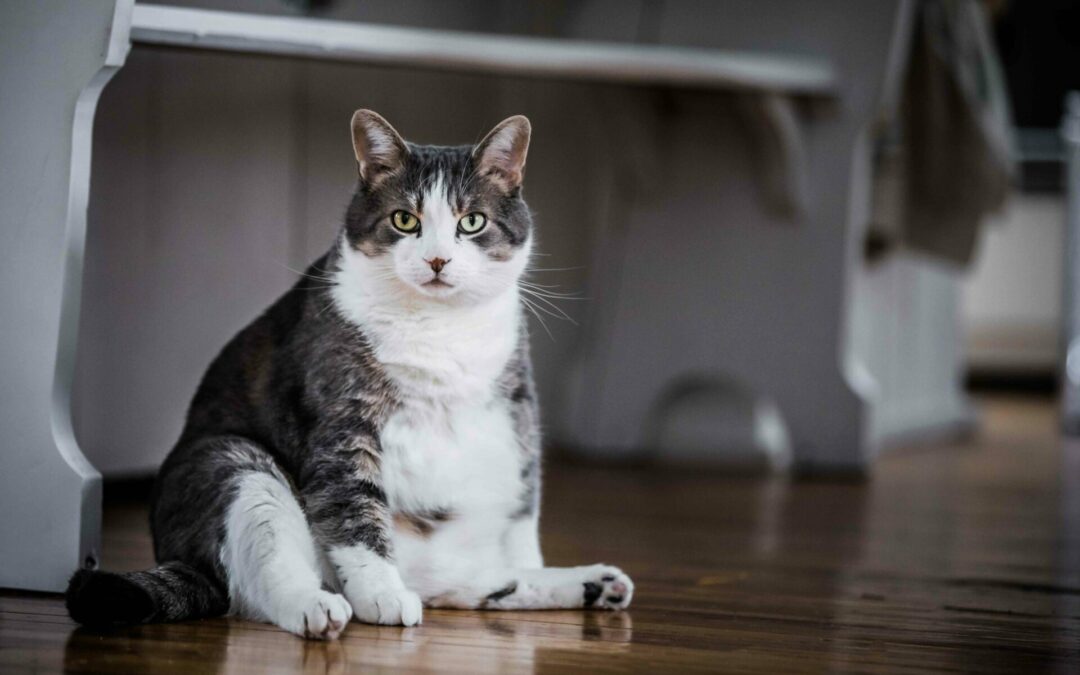Do you ever find yourself calling your pet “extra fluffy” as you give them a belly rub? While a little pudge may look cute, extra weight can put a serious strain on your dog or cat’s health. In fact, obesity is one of the most common and preventable conditions veterinarians see today. The good news is that with some small adjustments and support, your pet can slim down, feel better, and enjoy more happy years by your side.
Here are some practical tips to help your furry friend stay healthy, active, and full of life.
TIP #1: Learn Why Pet Obesity Matters
It is easy to think of pet obesity as a cosmetic issue, but the truth is, it is directly linked to major health concerns. Overweight pets are at higher risk for conditions like diabetes, arthritis, heart disease, respiratory problems, and even certain cancers. Obesity can also shorten a pet’s lifespan by reducing their ability to stay active and enjoy playtime.
Many pet parents notice their dog or cat slowing down and assume it is just aging. Often, the real culprit is excess weight putting strain on their joints or making it harder to breathe. By keeping your pet lean, you are protecting them from years of discomfort and giving them a better quality of life.
TIP #2: Check if Your Pet is Overweight
It can be tricky to know if a pet is overweight, especially if they have thick fur. A simple way to check at home is the “rib test.” Run your hands along your pet’s sides. You should be able to feel the ribs easily, but they shouldn’t be prominent. Dogs and cats should also have a defined waist when viewed from above and a visible tuck in the belly when viewed from the side.
If you are unsure, scheduling a weight evaluation with a veterinarian is the best next step. Minnesota Veterinary Hospital in Shoreview offers weight management guidance that goes beyond a number on the scale. Our team can help assess body condition, talk about lifestyle, and create a realistic plan for safe weight loss.
TIP #3: Feed the Right Amount
Most cases of pet obesity come down to food. Portion control makes all the difference. Many pet parents pour food into a bowl without measuring, which can easily lead to overfeeding. Using a standard measuring cup ensures your dog or cat gets the correct amount.
Free-feeding, where food is left out all day, often encourages overeating. Instead, stick to scheduled meal times and avoid table scraps. While it may feel kind to share your dinner, human food often contains extra calories, salt, and fat that pets do not need.
Healthy treat alternatives are a great way to reward your furry friend without adding unnecessary pounds. Baby carrots, green beans, or small pieces of apple work well for dogs. Cats often love freeze-dried meat or special low-calorie treats designed for weight management.
TIP #4: Keep Your Pet Active
Just like people, pets need exercise to stay fit. Daily movement not only burns calories but also keeps muscles strong and minds sharp.
For dogs, regular walks are important, even if they are short and frequent. Games like fetch or tug-of-war can turn exercise into fun bonding time. If your dog is already overweight, start with gentle walks and gradually increase duration as they build stamina.
Cats can be more challenging, but interactive toys like feather wands, laser pointers, or food puzzle toys encourage play and activity. Scratching posts, cat trees, and climbing shelves give them opportunities to stretch, jump, and move more throughout the day.
Making exercise part of your pet’s routine can transform weight management from a chore into something both of you look forward to.
TIP #5: Get Veterinary Support
Weight management is safest and most effective with the guidance of a veterinarian. A professional plan ensures your pet loses weight steadily without losing muscle or nutrients. At Minnesota Veterinary Hospital, weight management programs are designed to fit each pet’s specific needs and lifestyle.
Sometimes, prescription diets are recommended because they are specially formulated to provide the right balance of nutrients while reducing calories. Supplements may also help with joint support if extra weight has caused discomfort.
For convenient access to veterinary-recommended diets, Minnesota Veterinary Hospital offers an online pharmacy where you can order trusted weight management foods and have them delivered right to your door. This takes the guesswork out of choosing the right product and ensures your pet gets safe, effective nutrition.
TIP #6: Know When It’s Time to Call the Veterinarian
Some signs signal that it is time to schedule an appointment with a veterinary professional. If your pet is having trouble moving, seems less interested in play, struggles with breathing, or gains weight quickly, it is best to seek help. Even subtle changes like reluctance to jump onto furniture or go up stairs can be related to excess pounds.
A phone call to Minnesota Veterinary Hospital at (651) 484-3331 can be the first step toward getting your pet back on track. Our team is dedicated to helping families in Shoreview and the surrounding area keep their pets healthy and active for years to come.
A Happier, Healthier Life is Within Reach
Every pet deserves the chance to run, play, and enjoy life without the burden of extra weight. By keeping an eye on diet, making time for daily activity, and partnering with a veterinarian, you can make a lasting difference in your pet’s health. A little extra fluff may look cute, but a healthy weight means more adventures, more energy, and more years of companionship.
Minnesota Veterinary Hospital is here to guide you with compassion, expertise, and practical support every step of the way. Call (651) 484-3331 today to schedule your pet’s weight management appointment and take the first step toward a healthier, happier future. Together, we can make sure “fluffy” means loved and happy, not unhealthy.

